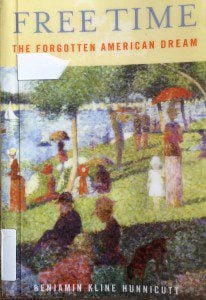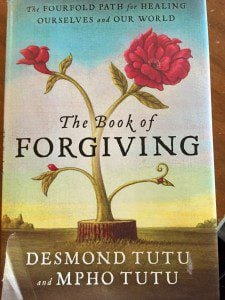I recently attended a plenary session facilitated by Trevor Hudson, an author and retreat leader from Johannesburg, South Africa. He invited us to experiment with a spiritual practice known as visio divina (“divine seeing”) on the icon “Christ and Abbot Mena” (late 6th-early 7th century, housed at the Louvre).
Many people are familiar with the spiritual practice lectio divina (“divine reading”), which invites practitioners to slowly, prayerfully, and contemplatively read a text, being attentive to what word or phrase most resonates with you. Visio divina similarly invites you to slowly, prayerfully, and contemplatively behold a piece of visual art. You are then invited to spend time reflecting or journaling about how God may be speaking to you through the detail of the text or art that has surprised, excited, or even disturbed you.
Trevor specifically invited us to reflect less on the historical context and more on this icon as an image of “Jesus and his friend.” Accordingly, as you ponder this icon, what insights, images, or emotions emerge for you related to friendship: whether friendship with other human, friendship with animal, friendship with Creation, friendship with Christ, or friendship with God?
As I walked a labyrinth with this image in mind, one reflection that surfaced was that the Quakers get it right in naming their spiritual community the “Religious Society of Friends.”
I was also reminded of a transformative experience of worshipping a few years ago at St. Gregory of Nyssa Episcopal in San Francisco. This church has shaped its congregational life around the teachings of its patron saint Gregory of Nyssa (c 335 – after 394), who invites us to learn to “become God’s friend.”
I additionally remembered a post from a fellow Patheos blogger, Tony Jones, who highlights that theologian Jurgen Moltmann suggests that, following the Gospel of John, “friend” should be added as a Christological office to the traditional titles of “prophet, priest, and king.”
In this spirit, I have learned much from the Emergent Church Movement, which describes itself as a “generative friendship” and the Ekklesia Project*, which describes itself as a “conspiracy of friendship.”**
This icon, most of all, made me grateful for the many friends I have had and the many friends who continue to inspire, challenge, and support me every day.
As you ponder this icon, how is God speaking to you today?
For Further Study
- Tim Mooney, “Praying with Art – Visio Divina” (Jan 1, 2000). Available at http://www.patheos.com/Resources/Additional-Resources/Pray-with-Art.html.
- Skete: beautiful, hand-painted icons from Orthodox Christian monks.
- Bridge Building Images: icons and sacred art.
- Trinity: religious artwork and icons.
- Aelred of Rievaulx: Spiritual Friendship (Cistercian Studies series). Many people consider Aelred (1110-1167) to be the patron saint of spiritual friendship.
Notes
*Ekklesia Project – The word for ‘church’ in the Greek New Testament is ekklesia, but this term did not originate with the early followers of Jesus. Long before the life of the historical Jesus, ekklesia was a Greco-Roman political term. Warren Carter, in his book Matthew and the Margins: A Sociopolitical and Religious Reading, notes that in its original context, ekklesia, broadly understood, “denotes the ‘duly summoned’ civic and political assembly of citizens in the Greek cities which along with a council expressed the will of the assembled people.” (335). Therefore, just as calling Jesus “lord” was a political statement that, “Caesar is not lord,” calling a gathering of Christians a “church” or “congregation” or “ekklesia” intentionally implied that the way of Jesus was an alternative to the way of Rome.
**“conspiracy of friendship” – As with ‘ekklesia,’ the word ‘conspiracy’ is intentionally chosen for its etymology: con (“with”) + spiritus (“spirit”); thus, a friendship that is in/with the Spirit. There is also the additional layer of meaning: ‘conspiracy’ as subversive against unjust aspects of the established order. For more, see John Dominic Crossan, God and Empire: Jesus Against Rome, Then and Now; Richard A. Horsley, Paul and Empire: Religion and Power in Roman Imperial Society; or Shane Claiborne and Chris Haw, Jesus for President: Politics for Ordinary Radicals.
The Rev. Carl Gregg is the pastor of Broadview Church in Chesapeake Beach, Maryland.
Follow him on Facebook (facebook.com/carlgregg) and Twitter (@carlgregg).












